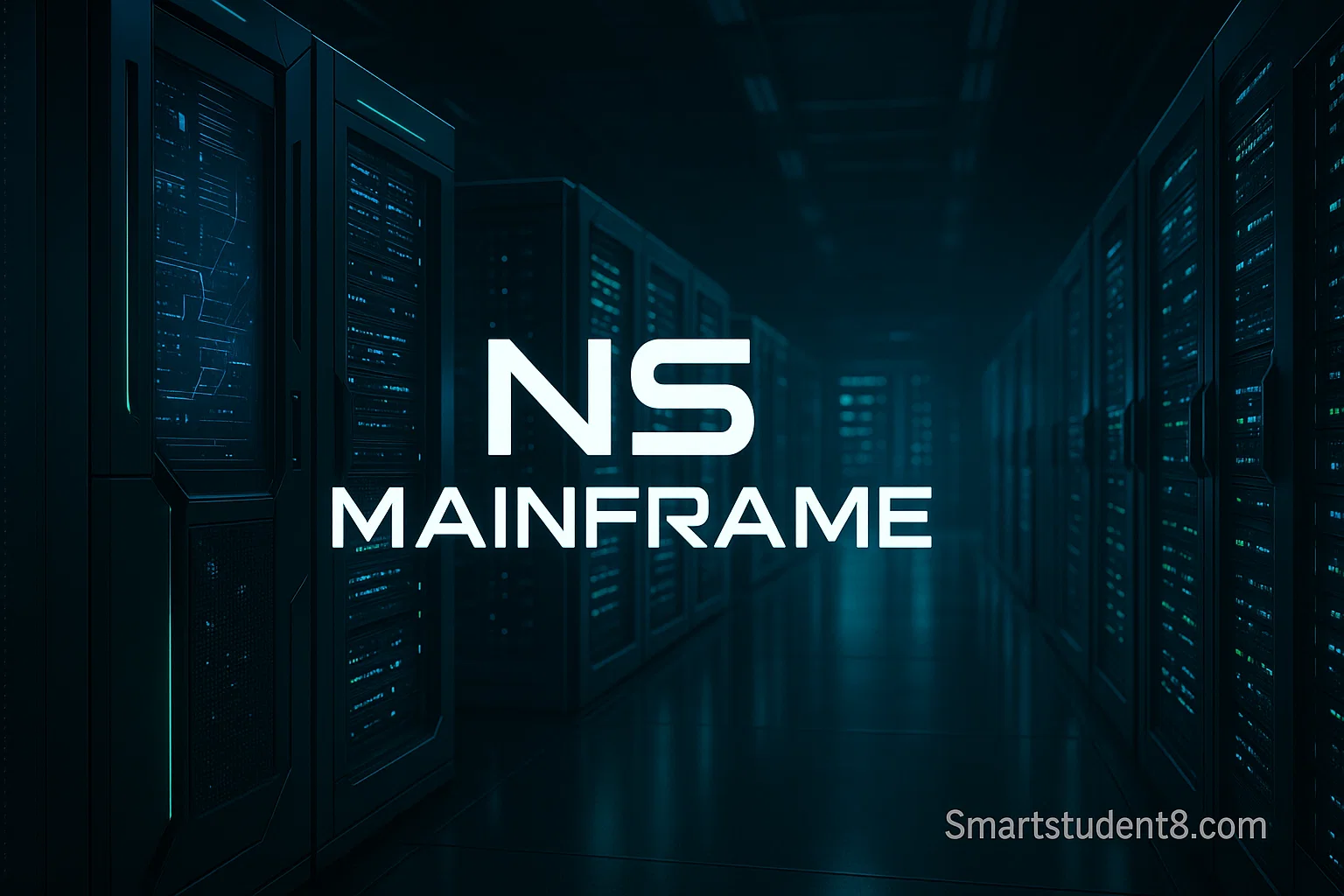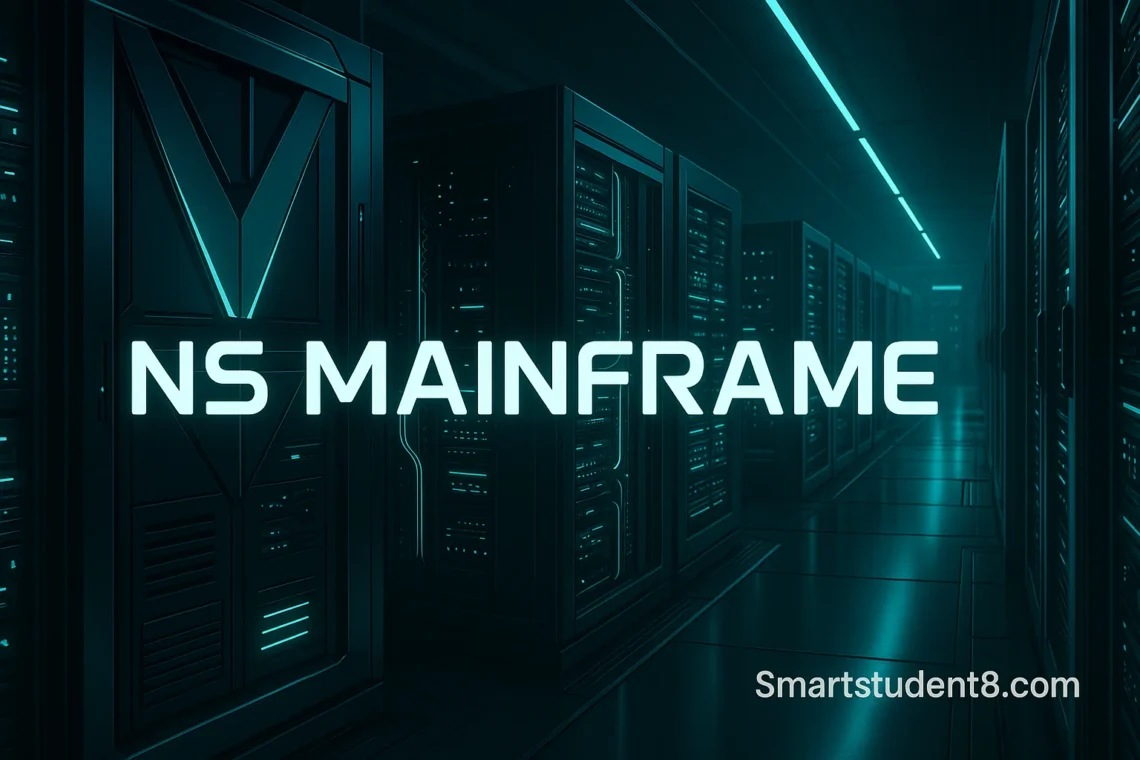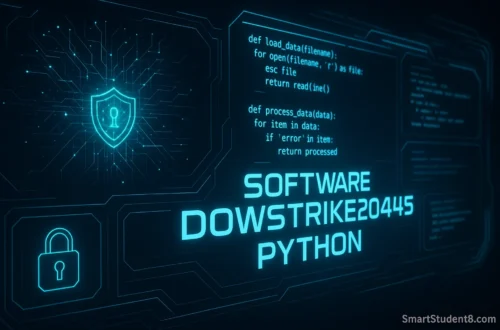If you’re thinking about technology that powers global commerce, transportation, and AI, then your thoughts might go to sleek mobile applications, cloud servers or sophisticated algorithms. A different type of computer is behind-the-scenes doing all the heavy lifting. Mainframe computers are this workhorse, which is why systems such as the NS Mainframe keep critical industries going. The mainframe computer is a workhorse that keeps critical industries moving. Systems like the NS Mainframe are unsung heroes.
Having worked on enterprise systems for several years, I know first-hand the importance of the mainframe’s stability. Mainframes have quietly evolved, adding modern features while retaining their core strengths. The mainframe isn’t a remnant of the past, but a foundation that’s constantly updated for the future. In this article we will explore the NS Mainframe’s history, its technological prowess and its essential role both in transportation logistics as well as the broader enterprise computing world. It will be examined how well it can handle large data volumes, provide top-notch security, and its role in an increasingly digital world.
Mainframe Evolution from Legacy to Cutting-Edge
In the early 20th century, these machines revolutionized large corporate and government data processing. The “NS Mainframe” term is usually associated with Norfolk Southern Corporation. A major player in transportation, their logistics network provides a good example of a critical mission that relies on mainframe technologies. The systems must be able to handle a huge amount of data in real-time, including train location and manifests as well as crew schedules and logs.
The mainframe has survived despite predictions that it would be gone. Why? Why? Early mainframes were giants that operated in isolation, but today’s systems are sophisticated and connected. From simple batch processes to thousands of concurrent transactions and user interfaces, they have developed from supporting simple batch process. The NS Mainframes now seamlessly integrate with cloud-based platforms. They support contemporary programming languages such as Java and Python. And they run Linux along side their more traditional counterparts, z/OS. It’s because of its ability to maintain stability while modernizing that the NS Mainframe has not just survived, but thrived as a key pillar in enterprise computing.
What is NS Mainframe, and how does it work?

A NS Mainframe at its heart is a computer with high performance, designed for heavy workloads and large data sets. It is not a computer, but a system that integrates hardware, software and firmware to provide maximum reliability. Mainframes are built to handle millions or thousands of transactions every second, instead of a typical server which can only manage a handful or hundred requests at a time. A unique architecture focuses on input/output capability and parallel processing.
It is built upon a powerful central CPU, along with coprocessors that specialize in I/O, cryptography, and large amounts of storage and memory. The logical partitioning concept (LPAR) is a fundamental one. This allows a mainframe computer to be separated into virtual servers running their respective operating systems, and each server can run its applications completely independently. One machine is able to run data analysis, production workloads and development environments without any interference. This allows for incredible efficiency and flexibility. Its architectural design makes it a reliable and robust backbone, especially for operations in the transportation industry where there is no room for downtime.
The Heart of Transportation – Managing logistics with precision
The NS Mainframe’s power is evident most clearly in logistic management. Precision is essential for companies like Norfolk Southern who operate thousands of miles and coordinate the daily movement of many freight cars. It is the nerve center of this massive network. It uses real-time information from rail yards and locomotives to coordinate complex arrival, departure, and switching operations.
Here are a couple of real-world tasks it handles:
- Scheduling and Real-Time Tracking: System continuously monitors the position of each train and cargo. In the event of a weather delay or maintenance work, the mainframe will instantly update schedules to connect trains, and inform all parties involved, thus minimizing disruptions. It is not easy to handle this dynamic schedule, which requires a lot of computational power.
- Management of Crews and Resources: This mainframe is responsible for crew management, which ensures that the pilots, conductors, and engineers will be at the proper place, the right time and in compliance with federal work hour regulations. This system also controls the use of railcars and locomotives to optimize their efficiency.
- Service Predictive: Through the analysis of data from sensor on track and train, this system can anticipate equipment failures. The system allows proactive maintenance, which prevents expensive breakdowns while improving the safety and reliability throughout the entire network.
A distributed network of servers with less power would make it nearly impossible for the whole transportation system to operate as one unit.
Mainframes’ Calling card: Unmatched reliability and uptime
In enterprise computing, “five-nines” (999.999% uptime), is considered the standard of availability. The result is just five minutes or less of downtime unplanned per year. Modern mainframes have been designed to achieve and sometimes exceed this standard. The engineering focus on fault tolerance, redundancy and reliability has resulted in this amazing level of reliability.
All components of the mainframe are designed for hot swapping, from power supplies to cooling systems. It is possible to replace a part that fails while maintaining the operation of the system. In addition, the firmware and hardware are equipped with self-correcting and advanced error detection features. These features often solve problems without any human involvement. In my experience, the mainframe is distinguished by its high level of resilience. Although cloud services provide redundancy they rely on software failovers which may take minutes, or even seconds. Mainframes can resolve these hardware issues in milliseconds. They are invisible to applications and end-users. Instantaneous recoveries are not just a convenience, they’re a must for certain critical operations.
A Fortress of Data, Mainframe Security for the Modern Age
The mainframe’s security in an era where cyber attacks are constant is the reason that many organizations continue using this platform to store their most important data. Architecture is built with layers of security, which are very difficult to break. Hardware features such as cryptographic processors can handle encryption, decryption and other functions at high speeds while not slowing the main processor down. System design based on logical partitioning allows for secure environments.
RACF, the Resource Access Control Facility, is a robust security feature that comes with the z/OS operating system. RACF gives you granular control of who has access to which resources and data, even down to the field level within a database. The audit trail is created by logging every access attempt, which is essential for regulatory compliance. With its layered defense-in depth approach, the mainframe has become one of most secure computing platforms, protecting an organization’s crown jewels.
The mainframe and cloud: What’s the difference? Enterprise Architecture: The Cloud.
Cloud computing’s rise led some to think that the days of mainframes are numbered. But the truth is much more complex. In lieu of replacing both platforms directly, organizations often adopt hybrid approaches that combine the strengths of each platform. The mainframe is best at managing massive databases and high-speed transactions, but the cloud excels in flexibility, scalability and cost-effectiveness for distributed apps.
Compare the key features of these two architectures:
| The Feature | NS Mainframe | Cloud Infrastructure |
|---|---|---|
| Transaction Processing | Optimized with ultra-low latency for transactions of millions per second. | They can scale up to high volume, but their latency may be higher and variable. |
| Reliability and Uptime | 100% uptime guaranteed with fault-tolerant hardware. | It is possible to achieve high availability, but it depends on the software configuration. |
| Security | Security with centralized hardware and robust encryption, access controls, and centralization. | The security model is shared, and it depends on both the provider’s infrastructure as well as user configuration. |
| Total Cost Of Ownership | The initial cost of acquisition is high, but the TCO can be lower in the long run for larger, more stable workloads because they are efficient. | Costs are lower initially (pay as you go), but can rise unpredictably based on scale and data transfer. |
| The Workload Capacity | Ideal for large batch processing, high-volume OLTP or core systems. | The best for web applications, big-data analytics, microservices and varied workloads. |
The choice comes down to mainframe versus in the cloud. A NS Mainframe is a secure record system that processes core business transactions. Cloud applications access this data through APIs and provide a user-friendly, modern front-end experience.
Skills Gap and Future Mainframe Talent
A “skills-gap” has been identified as one of the greatest challenges for the mainframe eco system. For a while, the universities and training programmes were unable to produce enough mainframe talent. A whole generation is approaching retirement. The perception was that mainframe expertise would become obsolete. The industry responded to the challenge in a proactive manner.
IBM and Broadcom have worked with users communities to launch a number of initiatives to train the next mainframers. Mainframes now have common language and tool support, such as VS Code. Git and Java. This makes it easy for developers to switch from another platform. The automation of management processes and the use of graphical user interfaces has simplified many tasks previously requiring command line expertise. I’ve seen many young developers initially wary of working with the “big Iron” platform, but become passionate once they realize its power and critical importance for the business. Mainframe’s future depends on the new talent. The industry makes a concerted push to embrace them.
AI Integration and Future-Proofing Mainframe Systems
The NS Mainframe tomorrow will be intelligent and more automated. This platform will not be positioned as a traditional legacy system. Instead, it will serve as the hub for a hybrid multicloud environment. The platform will be integrated with both public and privately-owned clouds in a more fluid and seamless manner, which allows data and workloads between the platforms to flow securely.
AI and machine learning also play a greater role. AI has been used in mainframe optimization, to predict system problems, and to identify real-time security threats. IBM’s z/OS is one example of an AI powered capability which analyzes the system behaviour to detect anomalies, such as those that may indicate a problem. This allows for proactive action before an impact can be felt. Machine learning models could be used to improve logistics and provide more advanced predictive maintenance for transportation. These models would run on the mainframe, which is close to all the relevant data.
Conclusion: The Power of the NS mainframe
The NS Mainframe, however, is more than a legacy piece of hardware. It is a dynamic element of modern digital economies. Because of its ability to handle large volumes of data with unprecedented reliability, efficiency, and security, it is the backbone for many industries. Mainframes are silently working in our everyday lives, ensuring everything from freight deliveries to credit card processing in milliseconds.
The mainframe is evolving with the technology. It embraces hybrid cloud, AI and new development practices. This mainframe does not oppose new technologies. Instead, it works with them to provide a safe and reliable core that can be used by a whole new generation of software. It is a strong reminder, in this rush to adopt the latest technology, that there are systems which provide stability, trust, and performance.





